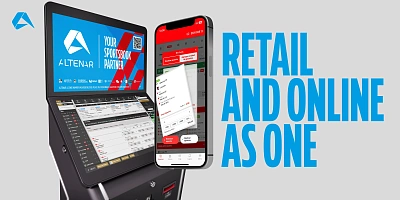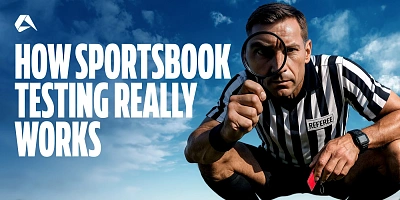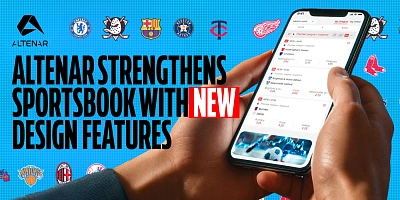Overview The Power of In-House PAM For Your Sportsbook
Player Account Management (PAM) is the essential core of any sportsbook operation, functioning as its operating system. If an operator does not control their PAM, they ultimately do not control their sportsbook. This system handles critical functions including every login, bet, bonus, and customer record, quietly dictating what the sportsbook can actually do. The industry is rapidly moving towards PAM ownership to address the limitations of third-party vendors, overcome rising platform costs at scale, comply with demands in regulated markets, and achieve deeper personalisation. While requiring a higher upfront investment, owning your PAM grants full control over player data and experience, offers long-term cost efficiency by eliminating usage fees, and enables greater scalability and rapid innovation.
Read the full blog for a detailed guide on PAM ownership, alternatives, and strategic benefits.
To properly understand the significance of Player Account Management (PAM) to your sportsbook, consider this. You can have the fastest front end, the slickest odds feed, and the most polished UI in the market, but if you don’t control your PAM, you don’t control your sportsbook.
It sounds dramatic for sure. But ask any operator who’s tried to run targeted campaigns, optimize payout flows, or expand into a tightly regulated market without full access to their account management system. The problem isn’t always immediately apparent but will eventually start to become more noticeable through the likes of support ticket delays, compliance blind spots, CRM limitations, or the growing realization that player data is flowing through a system you don’t own.
That system is your PAM and it sits at the core of everything. Every login, every bet, every bonus, and every customer record. If you're not already thinking seriously about it, you will be soon.
The Drive Towards PAM Ownership
For a long time, PAM was treated like the basic plumbing of a sportsbook operation. It’s essential, yes, but mostly invisible. If it worked, it worked. No one questioned what sat under the hood unless something broke. However, this mentality is changing fast.
Operators are now looking deeper into their PAM setups because it’s become unavoidable. The platform layer (systems powering your sportsbook’s core) is increasingly where competitive edge is gained or lost.
Here’s why that change is happening:
1. Limitations with Third-Party Vendors
It starts with a few feature requests that get delayed. Then it’s the inability to run specific bonus campaigns, or change a KYC flow, or see the data you need. When every adjustment depends on someone else’s product, operators start to wonder what it would look like to own the engine instead.
2. Rising Platform Costs at Scale
Many PAM vendors charge per active user or as a percentage of GGR. That’s more than manageable at the time of launch, but as your business grows, so does the fee. For operators pushing volume, those costs can quietly snowball into significant outlays over time. Building your own PAM starts to look less like a luxury and more like a financial necessity.
3. Expansion into Regulated Markets
Some regulated markets demand precise compliance reporting, adaptable risk controls, and integrated responsible gambling tools. Relying on a rigid PAM system not designed for local compliance creates real operational risk. In some regulated environments, flexibility is essential.
4. Personalization and CRM Evolution
Operators want more than dashboards now. They want intelligent customer segmentation, predictive models, and real-time campaign logic. But if your PAM can’t support dynamic player tags or behavioral triggers, you’re stuck. Custom-built PAMs open the door to more adaptive engagement strategies.
5. Long-Term Architectural Planning
Even if everything is working fine today, forward-thinking operators are asking what will happen two years from now. Will we be locked into vendor dependencies? Will our tech stack allow us to adapt? Exploring PAM ownership is often about future-proofing, not just fixing what’s broken.
Why PAM Is the Core of Your Sportsbook
Every operator knows they need a sportsbook, a front end, and a risk engine. And while PAM isn’t a mystery to operators, its strategic impact is often underestimated. In practical terms, it quietly dictates what your sportsbook can actually do.
Think of PAM as the sportsbook’s operating system. You see the apps, the odds, the bet slip, and the interface, but it’s the PAM running the show in the background, handling data, permissions, rules, and logic.
It manages every player interaction from registration to withdrawal. It's where sessions are tracked, balances are stored, bonuses are issued, documents are verified, and bets are attributed to player IDs. If you strip everything else away, it’s the PAM that keeps the lights on.
Here’s another way to think about it:
The PAM is the control room. It doesn’t set the odds or write the headlines. Instead, it manages the switches, rules, and systems that enable the sportsbook to operate.
PAM handles:
-
Accounts: Onboarding, logins, player profiles
-
Wallets: Multi-currency balances, transactions, bet settlement
-
Payments: Deposit and withdrawal workflows
-
KYC & Risk: Document management, fraud logic, source of funds
-
Bonuses & Promotions: Who gets what, when, and under which conditions
-
Responsible Gambling Tools: Limits, exclusions, behavioral triggers
-
Compliance Reporting: Tax logs, activity summaries, regulatory data
What’s often misunderstood is how much the PAM dictates your ability to act. Want to build your own bonus logic? Use real-time segmentation? React to a regulatory change next week instead of next quarter? If you don’t own the PAM, you’re not really in control.
This is why more operators are moving from renting generic PAMs to building their own, thus gaining control over how their sportsbook works, grows, and responds.
PAM Ownership vs Alternatives
So now we have established the fundamental importance of PAM, the question remains: Do you want to rent one, or do you want to own it?
There’s no single correct answer. Only the model that best fits your current stage, future plans, and appetite for control. Nonetheless, the trade-offs involved merit serious attention. Choosing the wrong model early can mean costly rebuilds, vendor lock-in, or missed opportunities down the line.
Here’s how the main options compare…
White Label
A fully-packaged solution where the PAM, front end, odds engine, payments, and even licensing are managed for you. You plug in branding and go live fast.
Pros:
-
Fastest time to market
-
Minimal operational burden
-
Ideal for MVP or early-stage testing
Cons:
-
No data ownership or back-end access
-
Shared infrastructure limits performance and personalization
-
Difficult to scale or migrate away from
-
Compliance and feature innovation tied to provider’s product
Turnkey Solution
A more advanced setup. You license a comprehensive platform, including PAM, sportsbook, CMS, and payments, from a single provider, while retaining more control over branding and operations.
Pros:
-
Faster launch than building from scratch
-
More customization than white label
-
One vendor to manage and integrate
Cons:
-
PAM is deeply embedded - replacing it later is a major overhaul
-
Still dependent on someone else’s product and tech cycles
-
It can be expensive as you scale
Modular Platform (Third-Party PAM + Custom Front End)
You license a PAM separately and build your sportsbook stack around it, integrating your own front end, pricing engine, and tools.
Pros:
-
Greater architectural flexibility
-
Choose best-in-class components
-
PAM can be replaced later with less disruption
Cons:
-
Requires more internal technical oversight
-
Integrations can become complex over time
-
Still renting the core logic - customization remains limited by vendor capabilities
In-House PAM (Built for You, Owned by You)
You build a custom PAM via a trusted tech partner. It’s tailored to your markets, products, and strategy, and it’s yours.
Pros:
-
Full control over player data, UX, compliance logic, and performance
-
Cheaper long-term cost base with no usage fees
-
Easier to adapt to regulation or expansion
-
Enables smarter CRM, segmentation, and real-time engagement
-
No reliance on someone else’s development cycles
Cons:
-
Higher upfront investment
-
Requires strong partner selection and technical planning
-
A longer launch time, although this can be offset with modular sportsbook integration from advanced technology providers like Altenar
Comparison Table
| Feature | White Label | Turnkey | Modular Platform | In-House PAM |
|---|---|---|---|---|
| Ownership | ✘ | ✘ | ✘ (partial) | ✔ |
| Customisation | ✘ | Limited | Moderate | Full |
| Scalability | ✘ | Moderate | High | High |
| Data Control | ✘ | ✘ | Partial | ✔ |
| Time to Market | Fastest | Fast | Moderate | Longer |
| Long-Term Cost Efficiency | ✘ | ✘ | Mixed | ✔ |
| Vendor Lock-In Risk | High | High | Medium | Low |
In practice, many operators begin with white-label, turnkey, or modular platforms, and there’s nothing wrong with that. The key, however, is having a clear migration path. The closer you get to owning your PAM, the more freedom you gain to build the sportsbook you genuinely want, not just the one your vendor allows.
Benefits of Owning Your PAM
Let’s be clear. Not every operator needs to own their PAM from day one. For early-stage brands or those testing a new market, off-the-shelf platforms and modular stacks can serve just fine. As scale, margin, or market complexity start to matter, though, so does control. And that conversation always leads back to the PAM.
Below are some of the most tangible advantages operators benefit from when they take ownership of their Player Account Management:
Full Data Ownership
When you own the PAM, you own the data. That means unrestricted access to player records, behaviors, and transaction histories, all in real time. API permissions or vendor-controlled exports no longer limit you. This opens the door to more intelligent customer segmentation, predictive models, and actionable insights that third-party systems simply can’t deliver at the same depth or speed.
Complete Control Over the Player Experience
With an in-house PAM, you control how players register, verify, deposit, withdraw, and interact. KYC flows can be adapted by market, bonus logic can be rewritten to match campaign goals, and wallet behavior can be customized to product types. Ultimately, it gives sportsbook operators the freedom to fine-tune the experience as they see fit, rather than compromising with a system built for someone else’s priorities.
Long-Term Cost Efficiency
While initial development can be significant, owning your PAM removes recurring platform fees tied to GGR, active users, or feature access. Instead of scaling your vendor’s margins, you scale your own. Over time, this creates a more predictable cost base, freeing up the budget for growth priorities like product innovation, market expansion, or customer acquisition.
Scalability and Product Innovation
You don’t have to wait for your turn, and if you want a new feature or market rule to go live next week, you can simply build it. Moreover, owning your PAM means new features, payment methods, market rules, or engagement tools can be implemented on your terms. Want to trial a microbetting product? Layer on a new bonus engine? Integrate a market-specific RG module? Well, you can, because you’re not waiting in line.
Better Compliance Position
As regulatory demands grow, flexibility becomes increasingly important. An in-house PAM lets you tailor KYC, AML, tax, and responsible gambling logic by jurisdiction. You can generate reports in regulator-ready formats, adapt player flows according to market, and respond quickly to legal changes.
Speed, Stability, and Performance
With direct access to the PAM, technical teams can optimize speed, fix issues in real time, and fine-tune performance by geography or product. You don’t need to wait on vendor support queues. This reduces downtime, improves load handling during peak periods, and delivers a faster, more reliable experience for your players, every time they log in.
What Does a PAM Cost?
Control, scalability and flexibility matter, but so does cost. And for most operators, that’s where the hard decisions are made.
Some operators choose to rent their entire platform stack, including PAM, in exchange for a faster launch and minimal maintenance. Others invest in modular systems or commission a bespoke PAM designed for long-term use.
Each path comes with its own cost structure. The table below outlines a comparison based on current industry norms.
Cost Comparison: Upfront vs Ongoing Across PAM Models
| PAM Model & Scope | Upfront Cost Estimate | Ongoing Cost Structure | Long-Term Scalability |
|---|---|---|---|
| White Label (Full Platform) | €10,000 – €50,000 setup | 15–30% of GGR or €10,000+/mo | Poor |
| Turnkey (Full Platform) | €50,000 – €150,000 + setup | 10–20% of GGR or tiered monthly fees | Moderate |
| Modular (PAM + Integrations) | €75,000 – €200,000 + total stack | €5,000–€15,000/mo + licensing | Good |
| In-House PAM (PAM only) | €250,000 – €1M + custom build | Maintenance + dev only (€5,000–€15,000/mo) | Excellent |
Cost Context and Considerations
The figures above are broad estimates based on current industry norms, private benchmarks, and typical ranges observed across regulated and emerging markets. Actual costs can vary significantly depending on scope, jurisdiction, vendor structure, and the specific products involved, especially when building a custom PAM or integrating modular components.
If you’re considering any of the platform models listed above or weighing the long-term costs of owning versus licensing your PAM, speak to a product expert at Altenar, who can provide more accurate insights and estimates based on your specific operational goals.
Putting It in Perspective
White-label and turnkey models typically roll the PAM into a bundled stack. That makes them accessible at launch, but normally more expensive at scale. You’ll pay lower upfront fees, but high GGR-based commissions or monthly rates that grow with your player base.
Modular platforms move you into more flexible territory. You still pay for licensing, but you can choose components, reduce reliance, and swap parts out over time. It’s often a stepping stone for operators aiming to build greater independence for the future.
An in-house PAM built for your exclusive use, on the other hand, carries the highest up-front cost, but comes with the most favorable long-term economics. You remove revenue-share erosion, reduce reliance on vendor timelines, and gain freedom to innovate without renegotiating contracts.
This is why so many mid-sized operators, especially those entering multiple regulated markets, start preparing for PAM ownership as early as their second year of operation. It’s not just a cost decision, it’s also a control decision with financial consequences.
Working with a Tech Partner to Build PAM
Building a PAM doesn’t necessarily mean hiring a team of engineers and writing millions of lines of code from scratch. In most cases, it means working with a trusted technology partner that specializes in developing scalable, regulatory-compliant PAM systems for sportsbook operators.
These tech partners bring the architectural knowledge, development capacity, and industry-specific experience needed to turn your requirements into reality. From KYC flows and wallet logic to compliance triggers and bonus engines, they help shape a system that’s built around how you operate. Many mid-sized operators now take this route as a means to gain control without overstretching internal resources. It offers the freedom of ownership with the speed and structure of an experienced build team behind it.
The key to success, however, is choosing the right partner. Ideally, one with modular design principles, clean API architecture, and a clear track record of working in regulated markets.
And while Altenar doesn’t build PAMs, we frequently collaborate and partner with top PAM providers like Pragmatic Solutions to help operators find the right option and ensure our sportsbook engine integrates cleanly into their wider platform. Whether you're taking full ownership or moving in that direction, our role is to ensure the sportsbook layer performs at its best, regardless of how the rest of your stack is structured.
Pairing Your PAM with A Sportsbook Engine
Once you’ve taken the step towards owning your PAM, whether it’s fully custom-built or licensed through a trusted tech partner, the next question is what you pair it with. That’s where a modular sportsbook engine like Altenar enters the picture.
Our sportsbook is designed to operate as a fully modular component. It integrates seamlessly with third-party PAMs, supports multiple front-end frameworks, and provides operators with the flexibility to build around it without compromising performance, speed, or feature depth.
We work closely with PAM providers and development teams during integration, ensuring player sessions, wallets, bonus logic, and risk systems all align smoothly across the stack. And as your business scales into new markets, new segments, or new engagement models, the sportsbook grows with you.
In short, if you’re taking control of your platform, the sportsbook shouldn’t be the part that holds you back. It should be the part that keeps you moving.
Owning your PAM is just one part of the equation. Book a private demo to explore how Altenar’s sportsbook engine integrates with in-house or modular PAM systems, and why the right fit matters.













